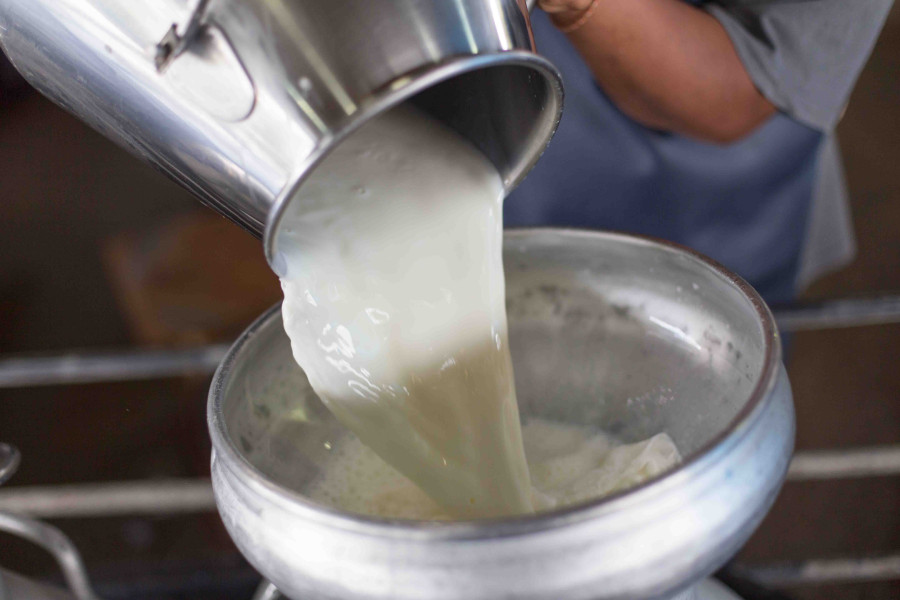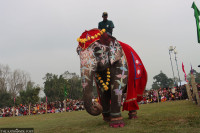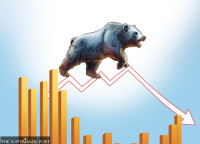Money
Milk has become expensive. Now, it’s the turn of state-owned DDC to hike rates
Sources say that the state-owned dairy corporation has proposed a hike to what the private sector has increased.
Krishana Prasain
A week after the government raised the raw milk price given to farmers by Rs9 per litre, private dairy associations, too, decided to jack up the retail price by Rs14 per litre.
Now, it’s the turn of the state-owned Dairy Development Corporation.
Sources say that the corporation has proposed a hike to what the private sector has increased. The proposal, however, needs to be passed by the cabinet.
Last Friday, the government raised the farmer’s price to Rs65.5 per litre from Rs56.4 per litre. The price was increased after farmers complained they were not getting a reasonable rate for their products.
A top official at the Dairy Development Corporation said the retail price will not go more than Rs14 per litre.
The burden, however, will be passed on to consumers who have been bearing the brunt of nearly double-digit inflation for the last one and a half years.
The government increased the price of raw milk to Rs56.4 per litre from Rs49.52 per litre in January last year. Subsequently, in February, the Dairy Development Corporation increased the retail prices of milk by Rs4.50 to Rs7 per 500 ml.
The government, normally, intervenes in the dairy market to keep the price of milk and milk products in check.
Prahlad Dahal, general secretary of the Nepal Dairy Association, said that they have increased the retail price of milk by Rs14 per litre.
A litre of milk now costs Rs100 and the new price has already come into effect from Thursday.
“The price of other dairy products have also been hiked accordingly and the new prices on it came into effect from Friday.”
“Out of the total hiked price, farmers will get 70 percent of it while 30 percent will go to industries,” said Dahal. The 30 percent is also divided among middlemen, he said.
There is a norm between farmers and dairy enterprises, that farmers will get 70 percent and 30 percent by industries.
The government used to increase the price for both farmers and the dairy industry but this year the government raised the farmer’s price only, he said. “So we as an industry increased the price on our own,” he said.
“We hiked the milk price by Rs14 per litre by adding 30 percent on increased raw milk price which also includes transportation cost,” Dahal said.
Farmers will get a minimum of Rs70 per litre measuring 5 percent fat and 8 percent solids not fat on raw milk, Dahal said.
According to Dahal, the retail price of plain curd has been increased to Rs130 per litre from Rs110.
“The government increased the price of milk to benefit the middlemen on the pretext of providing relief to farmers as the farmers have not been able to get price for their product,” said Madhav Timalsina, president of the Consumer Rights Investigation Forum.
With the Department of Food Technology and Quality Control not inspecting the quality and the Department of Commerce, Supplies and Consumer Protection not inspecting the price, dairy entrepreneurs influenced people with political power and increased the price on their own, he said.
“The private dairy companies increasing the retail price of milk on their own before the Dairy Development Corporation reviewing the price is not justified,” Timalsina said. Despite taking steps to control inflation, it was not necessary to raise the price of milk which is listed under essential goods by the government, he said.
The quality of milk is questionable and despite maintaining the quality, the price is being increased annually, Timalsina said.
At a time when the state-owned milk producers hold billions of arrears to farmers, it is doubtful that the farmers will get a price for their product easily, Timalsina said. “If the situation of the government is like this then we can easily assume the situation of farmers selling milk to private dairy enterprises,” he said.
According to the Commercial Livestock Survey, a report published by the National Statistics Office in 2021, there are a total of 6,486 medium and large commercial livestock enterprises.
According to the survey, 15,380 dairy cows produce a total of 45,803 tonnes of milk on average while 10,841 buffaloes give 23,231 tonnes of milk on average.




 9.12°C Kathmandu
9.12°C Kathmandu













%20(1).jpg&w=300&height=200)
